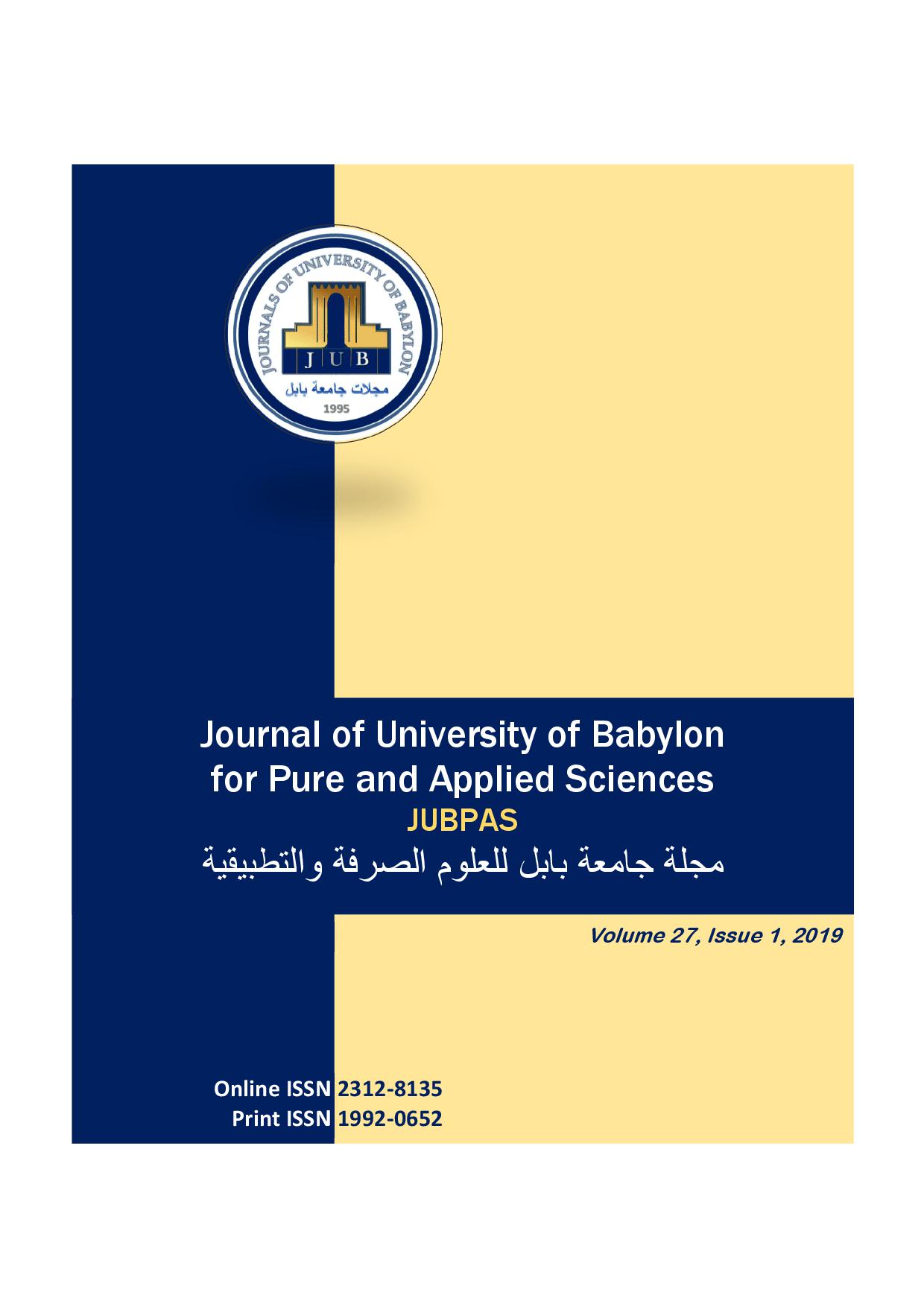Writer Identification Based on Arabic Handwriting Recognition by using Speed Up Robust Feature and K- Nearest Neighbor Classification
Main Article Content
Abstract
In a writer recognition system, the system performs a “one-to-many” search in a large database with handwriting samples of known authors and returns a possible candidate list. This paper proposes method for writer identification handwritten Arabic word without segmentation to sub letters based on feature extraction speed up robust feature transform (SURF) and K nearest neighbor classification (KNN) to enhance the writer's identification accuracy. After feature extraction, it can be cluster by K-means algorithm to standardize the number of features. The feature extraction and feature clustering called to gather Bag of Word (BOW); it converts arbitrary number of image feature to uniform length feature vector. The proposed method experimented using (IFN/ENIT) database. The recognition rate of experiment result is (96.666).
Article Details
Issue
Section
How to Cite
References
A. Bensefia and T. Paquet, “Writer verification based on a single handwriting word samples,” EURASIP J. Image Video Process., vol. 2016, no. 1, p. 34, 2016.
H. Khotanlou, “Writer Identity Recognition and Confirmation Using Persian Handwritten Texts,” Adv. Comput. Sci. an Int. J., vol. 4, no. 6, pp. 24–30, 2015.
J. H. Y. AlKhateeb, “Word based off-line handwritten Arabic classification and recognition. Design of automatic recognition system for large vocabulary offline handwritten Arabic words using machine learning approaches.” University of Bradford, 2010.
P. S. A. Chakravarthy, A. S. N., Penmetsa V. Krishna Raja, “Handwritten Text Image Authentication Using Back Propagation,” arXiv Prepr. arXiv, no. 1110.1488, 2011.
M. N. Abdi and M. Khemakhem, “Arabic writer identification and verification using template matching analysis of texture,” Proc. - 2012 IEEE 12th Int. Conf. Comput. Inf. Technol. CIT 2012, no. December, pp. 592–597, 2012.
Y. Hannad, I. Siddiqi, and M. E. Y. El Kettani, “Writer identification using texture descriptors of handwritten fragments,” Expert Syst. Appl., vol. 47, pp. 14–22, 2016.
Y. Hannad, I. Siddiqi, Y. El Merabet, and M. El Youssfi El Kettani, “Arabic writer identification system using the histogram of oriented gradients (HOG) of handwritten fragments,” in Proceedings of the Mediterranean Conference on Pattern Recognition and Artificial Intelligence, 2016, pp. 98–102.
H. Sheikh, A., Khotanlou, “Writer identity recognition and confirmation using persian handwritten texts,” Int. J. Adv. Appl. Sci., vol. 6, no. 2, pp. 98–105, 2017.
L. Bay, H., Ess, A., Tuytelaars, T., & Van Gool, “Speeded-up robust features (SURF).,” Comput. Vis. image Underst., vol. 3, no. 110, pp. 346–359, 2008.
T. M. Kodinariya and P. R. Makwana, “Review on determining number of Cluster in K-Means Clustering,” Int. J., vol. 1, no. 6, pp. 90–95, 2013.
J. Kim1, B. S. Kim, and S. Savarese, “Comparing image classification methods: K-nearest-neighbor and support-vector-machines,” in Proceedings of the 6th WSEAS international conference on Computer Engineering and Applications, and Proceedings of the 2012 American conference on Applied Mathematics, 2012, vol. 1001, pp. 42122–48109.
V. L. Boiculese, G. Dimitriu, and M. Moscalu, “Improving recall of k-nearest neighbor algorithm for classes of uneven size,” in 2013 E-Health and Bioengineering Conference (EHB), 2013, pp. 1–4.
J. H. AlKhateeb, F. Khelifi, J. Jiang, and S. S. Ipson, “A new approach for off-line handwritten Arabic word recognition using KNN classifier,” in 2009 IEEE International Conference on Signal and Image Processing Applications, 2009, pp. 191–194.
C. Manning, P. Raghavan, and H. Schütze, “Introduction to information retrieval,” Nat. Lang. Eng., vol. 16, no. 1, pp. 100–103, 2010.
